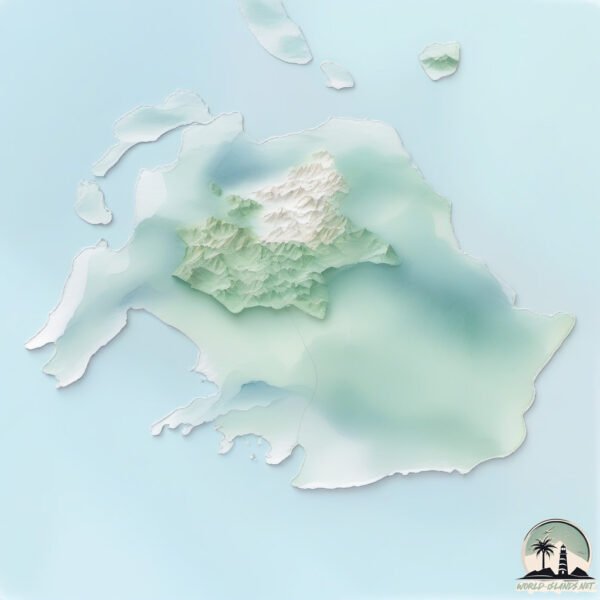Efate

Welcome to Efate, a Tropical island in the Coral Sea, part of the majestic Pacific Ocean. This guide offers a comprehensive overview of what makes Efate unique – from its geography and climate to its population, infrastructure, and beyond. Dive into the details:
- Geography and Size: Explore the island’s size and location.
- Climate and Weather: Weather patterns and temperature.
- Topography and Nature: Uncover the natural wonders of the island.
- Infrastructure and Travelling: Insights on reaching, staying, and making the most of your visit.
- News and Headlines: Latest News.
Geography and size of Efate
Size: 898.5 km²
Coastline: 238.5 km
Ocean: Pacific Ocean
Sea: Coral Sea
Continent: Oceania
Efate is a Large Island spanning 898 km² with a coastline of 239 km.
Archipel: Melanesia – A subregion of Oceania in the southwestern Pacific Ocean, including countries like Fiji, Solomon Islands, and Vanuatu, known for their diverse cultures and languages.
Tectonic Plate: New Hebrides – A small plate in the southwestern Pacific Ocean, responsible for the New Hebrides Trench and known for its complex interaction with the Australian Plate.
The geographic heart of the island is pinpointed at these coordinates:
Latitude: -17.67686385 / Longitude: 168.38985589
Climate and weather of Efate
Climate Zone: Tropical
Climate Details: Tropical Rainforest Climate
Temperature: Hot
Climate Characteristics: This climate is typified by heavy rainfall throughout the year, high humidity, and consistently high temperatures, leading to lush rainforests and rich biodiversity. Seasonal temperature variations are minimal.
Topography and nature of Efate
Timezone: UTC+11:00
Timezone places: Pacific/Guadalcanal
Max. Elevation: 599 m
Mean Elevation: 146 m
Vegetation: Evergreen Broadleaf Forest
Tree Coverage: 63%
The mean elevation is 146 m. The highest elevation on the island reaches approximately 599 meters above sea level. The island is characterized by Plateau: Elevated flatlands rising sharply above the surrounding area, with a maximum elevation over 500 meters but a mean elevation less than 300 meters, forming unique highland areas on islands.
Dominating Vegetation: Evergreen Broadleaf Forest
Characterized by dense, lush canopies of broadleaf trees that retain their leaves year-round. These forests are typically found in tropical and subtropical regions and are known for their high biodiversity. Efate has a tree cover of 63 %.
Vegetation: 8 vegetation zones – Very Highly Diverse Island
Islands in this range are ecological powerhouses, showcasing a wide array of vegetation zones. Each zone, from lush rainforests to arid scrublands, coastal mangroves to mountainous regions, contributes to a complex and interdependent ecosystem. These islands are often hotspots of biodiversity, supporting numerous species and intricate ecological processes.
Infrastructure and Travelling to Efate
Does the island have a public airport? yes.
Efate has a public and scheduled airport. The following airports are located on this island: Bauerfield International Airport.
Does the island have a major port? yes.
Efate is home to a major port. The following ports are situated on the island: PORT VILA, FORARI BAY.
The mean population of Efate is 111 per km². Efate is Moderately Inhabited. The island belongs to Vanuatu.
The name of the island resonates across different cultures and languages. Here is how it is known around the world: Arabic: إفات; German: Efate; Spanish: Éfaté; French: Éfaté; Portuguese: Éfaté; Russian: Эфате; Chinese: 埃法特岛
Continuing your journey, Moso Island is the next notable island, situated merely km away.
Vanuatu is classified as Least developed region: Countries that exhibit the lowest indicators of socioeconomic development, with the lowest Human Development Index ratings. The level of income is Lower middle income.
News – Latest Updates and Headlines from Efate
Stay informed with the most recent news and important headlines from Efate. Here’s a roundup of the latest developments.
Please note: The data used here has been primarily extracted from satellite readings. Deviations from exact values may occur, particularly regarding the height of elevations and population density. Land area and coastline measurements refer to average values at mean high tide.
